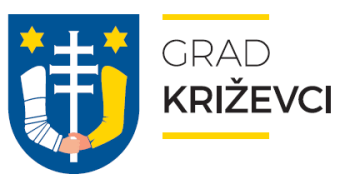Balkans citizens going solar
Spotlight on citizen energy in Croatia, Serbia and Bosnia-Herzegovina
The Western Balkans are a wonderful patchwork of cultures and the countries in the zone do each have their specific socio-economic context. While countries like Croatia are part of the EU and therefore bound to the Clean Energy package legislation, others are still in the waiting line, either as official or potential candidates. One of many things, though, they do have in common is the enormous solar energy potential and the fact that it is almost untapped yet.
At last year’s Western Balkans summit, political leaders expressed their commitment to the launch of a Green Agenda for the region. Indeed, fostering the transition towards cleaner and renewable energy sources in a region highly dependent on coal is crucial – for its residents and for bringing the region closer to the EU. The green strategy includes the objective of aligning the region with the EU’s 2050 ambition to make Europe a carbon-neutral continent.
And while governments are still fleshing out the future, local authorities and communities in the area are already making this reality.
The seeds of citizen energy
Undoubtedly, Croatia is a forerunner in community energy: several citizen projects were launched and implemented in the past 7 to 8 years. Amongst the most emblematic initiatives is the one by Križevci city council. Supported by the national energy cooperative ZEZ the local council installed the first citizen-funded solar plant. Success amongst the local community was enormous and within 10 days the necessary €30,000 were collected through crowdfunding. The plant has a capacity of 50 kW and is expected to save around 55 tonnes of carbon dioxide per year. The solar energy it produces will mostly be used to power the business centre, and the surplus will be fed into the municipal grid. Since then, more cooperatives were born like the Krk energy cooperative or Križevci’s most recent KLIK cooperative. In addition to very committed organisations, these positive citizen energy dynamics were certainly also facilitated by Croatia’s EU accession and alignment of policies.
In Bosnia and Herzegovina (BiH) and Serbia several awareness-raising campaigns around the use of renewables were implemented but scope and resources were more limited. In 2018, the first crowdfunding citizen energy initiative was launched in BiH by the local NGO REIC, followed by the Solar Pecka campaign. In Serbia, the “Sunny roofs of Šabac” campaign was launched by citizens end of 2019. Supported by local and international organisations, it resulted in the country’s first energy cooperative.
The seeds have been planted, but the ground needs to become more fertile still: Although Croatia is most advanced in involving citizens in energy production, there still is a widespread and deeply rooted belief in the three countries that communities and citizens are only final energy consumers without any proactive attitude. This leads to a very low interest for community energy both from city decision-makers and citizens. “What’s more, the lack of a clear vision, inefficient administration and weak interest of the community are amongst the main barriers. Also, especially in BiH, many institutional and legal gaps discourage local communities from developing concrete projects.” states Vedad Suljic, energy expert from the Sarajevo-based NGO REIC.
Most of the current successes happened in small cities. The time is now to involve further cities and to massively mobilise citizens and local businesses – for any type of renewable energy use from hot water to district heating.
Bosnia and Herzegovina: The 2018 BiH Final report by the Ministry of Foreign Trade and Economic Relations of Bosnia and Herzegovina (MoFTER) provides recommendations for incentive schemes for community energy projects. In some parts of the country community energy is already institutionalised (e.g. energy trading through the energy cooperative).
Serbia: Back in 2005, Serbia confirmed its course of action towards the adoption of the EU acquis (by signing the Treaty establishing the Energy Community). Since it requires active coordination of energy and climate policies, Serbia is currently facing the challenges of implementing EU goals in this sector. Currently there are no energy cooperatives: their creation lacks incentives and a stronger will for risk-taking from financial institutions.
Croatia: The Energy Development Strategy 2030 which emphasizes community energy was adopted in February 2020. The Draft Bill on Community Energy from photovoltaics was presented in 2015.






